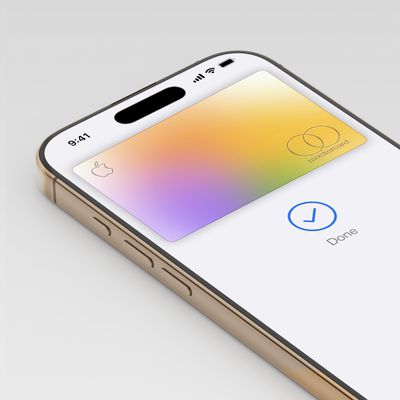'Bash' Security Flaw in OS X Allows for Malicious Attacks on Devices and Services
 Security researchers from Red Hat have uncovered a new exploit in the common "Bash" command shell found in OS X and Linux which can be used to deploy malicious code with minimal effort. Due to the ubiquity of the Bash shell, the exploit can affect a wide variety of different web-connected devices and properties, including unsecured websites, smart home appliances, servers, and more.
Security researchers from Red Hat have uncovered a new exploit in the common "Bash" command shell found in OS X and Linux which can be used to deploy malicious code with minimal effort. Due to the ubiquity of the Bash shell, the exploit can affect a wide variety of different web-connected devices and properties, including unsecured websites, smart home appliances, servers, and more.
Security researcher Robert Graham noted on his blog that the Bash exploit is "as big as Heartbleed," referring to the flaw discovered earlier this year in the popular OpenSSL software which secures connections between clients and servers:
Internet-of-things devices like video cameras are especially vulnerable because a lot of their software is built from web-enabled bash scripts. Thus, not only are they less likely to be patched, they are more likely to expose the vulnerability to the outside world.
Unlike Heartbleed, which only affected a specific version of OpenSSL, this bash bug has been around for a long, long time. That means there are lots of old devices on the network vulnerable to this bug. The number of systems needing to be patched, but which won't be, is much larger than Heartbleed.
Heartbleed was said to have affected 66% of the Internet, although Apple announced in April that the exploit did not affect its software or "key services." Apple also released updates for the AirPort Extreme and Time Capsule to better secure both web devices against Heartbleed.
A topic discussing the Bash exploit on StackExchange also notes that Apple did not include a fix for the bug in its latest round of security updates that came alongside the release of OS X Mavericks 10.9.5 last week. It is possible however that Apple will release a fix for OS X in the near future to address the exploit, similar to what it has done for other security issues in the past.
Popular Stories
CES 2026 has just provided a first glimpse of the folding display technology that Apple is expected to use in its upcoming foldable iPhone. At the event, Samsung Display briefly showcased its new crease-less foldable OLED panel beside a Galaxy Z Fold 7, and according to SamMobile, which saw the test booth before it was abruptly removed, the new panel "has no crease at all" in comparison.
The ...
Apple is not expected to release a standard iPhone 18 model this year, according to a growing number of reports that suggest the company is planning a significant change to its long-standing annual iPhone launch cycle.
Despite the immense success of the iPhone 17 in 2025, the iPhone 18 is not expected to arrive until the spring of 2027, leaving the iPhone 17 in the lineup as the latest...
Apple has designed a limited edition version of the AirPods Pro 3 to celebrate Lunar New Year, and customers in select countries can purchase them starting today. The Year of the Horse Special Edition AirPods Pro 3 feature a unique horse emoji character that's otherwise unavailable.
Customers in China, Hong Kong, Taiwan, Malaysia, and Singapore are able to buy the AirPods, and they'll be...
JPMorgan Chase has reached a deal to take over operation of the Apple Card, reports The Wall Street Journal. Barring any "last minute hiccups," the deal should be announced shortly after over a year of negotiations.
Reports began circulating over two years ago that current Apple Card issuer Goldman Sachs was looking to end its partnership with Apple as part of an effort to scale back on...
Logitech users on macOS found themselves locked out of their mouse customizations yesterday after the company let a security certificate expire, breaking both its Logi Options+ and G HUB configuration apps.
Logitech devices like its MX Master series mice and MX Keys keyboards stopped working properly as a result of the oversight, with users unable to access their custom scrolling setup,...
OpenAI today announced the launch of ChatGPT Health, a dedicated section of ChatGPT where users can ask health-related questions completely separated from their main ChatGPT experience.
For more personalized responses, users can connect various health data services such as Apple Health, Function, MyFitnessPal, Weight Watchers, AllTrails, Instacart, and Peloton. Last month, MacRumors discovere...
With the release of iPadOS 26.2 and macOS Tahoe 26.2, Apple has improved the Wi-Fi speeds for select Macs and iPads that support Wi-Fi 6E. Updated Wi-Fi connectivity specifications are listed in Apple's platform deployment guide.
The M4 iPad Pro models, M3 iPad Air models, A17 Pro iPad mini, M2 to M5 MacBook Pro models, M2, M3, and M4 MacBook Air models, and other Wi-Fi 6E Macs and iPads now ...
Anker announced a new series of products at CES this week, and most of them will begin rolling out to customers later in January. A few of these devices, including the Nano Docking Station and 45W Nano Charger, have pre-order discounts on Anker's website, and we're also tracking big discounts in Anker's New Year's sale.
Note: MacRumors is an affiliate partner with some of these vendors. When...
![]() Security researchers from Red Hat have uncovered a new exploit in the common "Bash" command shell found in OS X and Linux which can be used to deploy malicious code with minimal effort. Due to the ubiquity of the Bash shell, the exploit can affect a wide variety of different web-connected devices and properties, including unsecured websites, smart home appliances, servers, and more.
Security researchers from Red Hat have uncovered a new exploit in the common "Bash" command shell found in OS X and Linux which can be used to deploy malicious code with minimal effort. Due to the ubiquity of the Bash shell, the exploit can affect a wide variety of different web-connected devices and properties, including unsecured websites, smart home appliances, servers, and more.






















